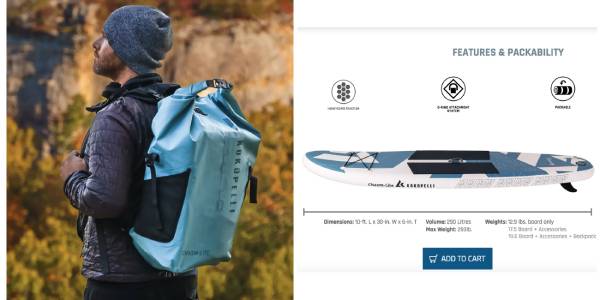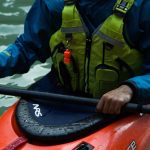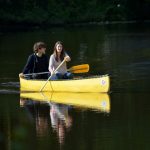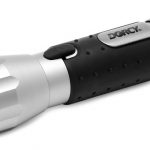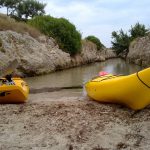Canoeing Health Benefits
There are many benefits to canoeing, including improving cardiovascular health, developing muscle mass, and burning calories.
Strengthens Your Cardiovascular System
Canoeing can help improve your cardiovascular health, which can reduce your risk of heart disease, diabetes, stroke, and Alzheimer’s disease.
P adding your canoe paddle steadily increases your heart rate, making your heart and lungs stronger and more efficient. Even after reaching a certain level of fitness, you can continue to increase the benefits by paddling more intensely.
Canoeing Burns a Lot of Calories
Canoeing is a great workout and burns a lot of calories. If you do it regularly, you can lose weight.
Paddling a canoe for 2 hours can burn nearly 1500 calories, which is more than double the amount of calories burned from walking for the same amount of time.
Canoeing Strengthens Many of Your Muscles
Paddling is a great way to work out your core muscles, including the muscles in your back, chest, shoulders, and arms. The resistance of the water makes it a great way to build strength.
It is less obvious that you are also exercising your abdominal muscles to help maintain the boat stability when you twist to increase your stroke’s overall power. You are also constantly applying pressure with your legs against the inside of the boat.
The continuous contraction of your leg muscles is a great way to exercise them and make them stronger. This also helps to keep them toned.
Canoeing is definitely a good form of exercise. Aside from burning calories and building muscle, it can also improve your mental health. If you’re looking for a new sport to add to your fitness routine, canoeing is definitely worth considering.
Regular Paddling Will Increase Your Stamina Levels
Stamina refers to the body’s ability to sustain physical activity or effort over a period of time. In other words, it is the body’s ability to resist and recover from fatigue.
This factor improves significantly with regular canoeing, so that you will be able to paddle for longer and feel less tired.
It Reduces Stress and Gives You Emotional Balance
People find being around water to be calming because it is in our instincts.
Exercise releases endorphins, which makes us feel happy. Canoeing offers a meditative state due to the effect of the water and nature, and the repetitive motion of paddling.
Can Improve Your Self-Confidence
Playing sports can improve your self-image.
Whenever you feel and look better, achieve personal records, give your best performance in sports, or overcome difficulties, your self-confidence and self-esteem will improve.
It Gives You Vitamin D
Just make sure you don’t overdo it. There are many benefits to taking Vitamin D, such as aiding in calcium absorption and boosting the immune system. However, it can be difficult to get enough of the vitamin only from food.
You can always take supplements to get your Vitamin D, but it’s much better to get it from the sun. Just be careful not to overdo it.
It’s not surprising that office workers are often deficient in vitamin D due to lack of sun exposure. Outdoor activities like canoeing can help improve vitamin D levels.
Canoeing is a Great Opportunity to Socialize
Canoes built for two or more paddlers require teamwork and communication to go in the right direction. This allows for more social interaction and problem-solving, which is good for mental health.
Canoeing is also an activity that is easy to get started with, as most of the American population lives near waterways where they can canoe. You do not need to be an experienced or professional athlete to enjoy canoeing – all you need is a canoe, paddles, and a life jacket.
The accessibility and enjoyment of hiking makes it a popular activity for groups, whether on excursions, events, or other activities.
It Is a Low Impact Sport
For some people, running every day can do more harm than good. Many sports can pose a danger of damaging your joints either through shock or repetitive use.
How To Engage Your Muscles Properly
Canoeing is a great way to get fit. It can help you lose weight, build muscle, and improve your mental health. If you are looking for a new exercise to try, canoeing might be the perfect sport for you.
Stabilize Your Back
Paddling with a straight back will help you avoid injury and improve your stability in the canoe. Make sure not to hunch over, which engaging the muscles in your back and core.
Hold Your Paddle Correctly
When using a single-bladed canoe paddle, holding it with the correct grip will ensure the most efficient paddle strokes. holding the paddle incorrectly, as if it were a double-bladed kayak paddle, will result in slow progress and sore arms.
Hold the paddle at the top of the grip with one hand, and hold the shaft with the other hand shoulder-width apart.
Power Using Your Core
When you start your paddle stroke, try to place the paddle in the water as far forward as you can without getting up from your seat. Then, with your outboard arm holding the paddle steady, use your core to rotate your body and pull the paddle toward yourself. This is the time when you should put the most force into it, since the resistance of the water comes into play here.
When you pull the paddle towards yourself using your upper body and arm muscles you will also notice the role of the leg muscles to increase stability and overall strength of the movement. The leg muscles help to keep the body in the correct position and provide extra power when needed.
When the paddle reaches your hips, it’s time to momentarily relax your muscles, lift the paddle out of the water and start another paddle stroke.
How Important is Canoe Strength?
Decades of canoeing northern rivers have convinced me that the strength of a wild river canoe takes a back seat to these variables:
Volume/Carrying Capacity
A river canoe needs to be big enough to go over waves rather than through them. You need a boat that won’t take on water!
Enough Rocker to Allow Quick Turns
Those who want to paddle in the Boundary Waters or Quetico should use a straight-keeled, narrow canoe. However, if you’re going to be paddling in wilder rivers where you need to make quick turns, you’ll need a canoe that turns more easily.
If you can’t keep a moderately rockered canoe on course in the wind, you need to improve your paddle skills.
No Land in Sightunder-Emphasize Speed
If you want a canoe that will go faster, you have to give up some features that would be useful in rapids. A narrower waterline, longer length, and finer ends make the canoe go faster, but make it harder to control in rough water.
It’s better to go slower and not crash than to go fast and have to pack your canoe home in a suitcase!
Whitewater Skill
You will not be able to avoid obstacles in fast moving water, so it is important to be practiced in maneuvers such as ferries, eddy-turns, peel-outs, side-slips, and braces. Skill is more important than anything else.
Canoe Hull Strength
What is the author’s opinion on the strength of wood strip solo canoes? The author believes that wood strip solo canoes are strong enough for rivers up to Class II+, as long as they are well-built and the paddlers are skilled.
Surviving a Canoe Wrap
The strength of the gunnels on a canoe partly determines whether it will survive a wrap around a boulder. If the gunnels are strong, the canoe may survive. If the gunnels are not strong, the strongest hull may not be able to survive.
Interestingly, good wooden rails often trump aluminum in this situation. This is because aluminum does not spring back into shape when it is bent, whereas wood does. If the aluminum is bent, it becomes more difficult to resist further bending.
As the bend tightens, more of the hull is exposed to the current, and more water pours in.
Wood rails are much more likely to resist bending than metal rails, up to a point. For example, American white ash can resist breaking at angles up to 90 degrees.
A few years ago, the writer wrapped a Mad River Kevlar Explorer around a boulder on the Steel River in Ontario. The Kevlar broke in several places, but the wooden rails held. When the boat was released from the rock, it sprang back into shape.
Although there was some structural damage, there were no leaks. This suggests that, in a wrap, wooden rails may be superior to metal.
Solo Canoes are Different
Because everything in a solo canoe has to be lighter, yet stronger, to deal with the tremendous stresses that paddling a solo canoe places on a craft Solo canoes are smaller and can be paddled alone, but they are also stronger than tandem canoes.
This is because everything in a solo canoe has to be lighter and stronger to deal with the stresses of paddling a solo canoe.
If two canoes are constructed identically but one is carrying more weight, the canoe carrying more weight will incur more damage if it hits the same rock at the same speed.
If you understand the term “tandem”, you know your physics. A tandem boat is twice the weight of a solo boat, meaning it will hit rocks with double the force.
Keep this in mind when choosing the material for your next solo canoe. If you’re not confident in your skills or you plan on paddling in dangerous rapids with a lot of weight, choose a layup that is strong and heavy.
Hull strength is important for canoes, but abrasion resistance may be even more important. Canoes often get damaged from being dragged over rocks while they are loaded, more so than from being hit by a rapid or wrapped around a boulder.
Of course, canoes can be built “too light” for wilderness travel, but many paddlers think that “too light” really means “too heavy”. My preference is to have a lighter canoe for flat water and a 17-foot, 70-pound composite canoe for rapids and tripping.
Be aware that there is a tradeoff between hull durability and repairability. For example, plastic and metal canoes are tougher than wood or Kevlar canoes, but they are also more difficult to repair.
Wood and composite canoes can be easily repaired to look “cosmetic perfect”.
Additional Tips
If you use a single-bladed paddle, you’ll need to switch hands every so often, otherwise you’ll only be using one side of your body.
If you are paddling with a partner, you will need to communicate when you are moving to the other side of the canoe, otherwise, you may end up going around in circles.
